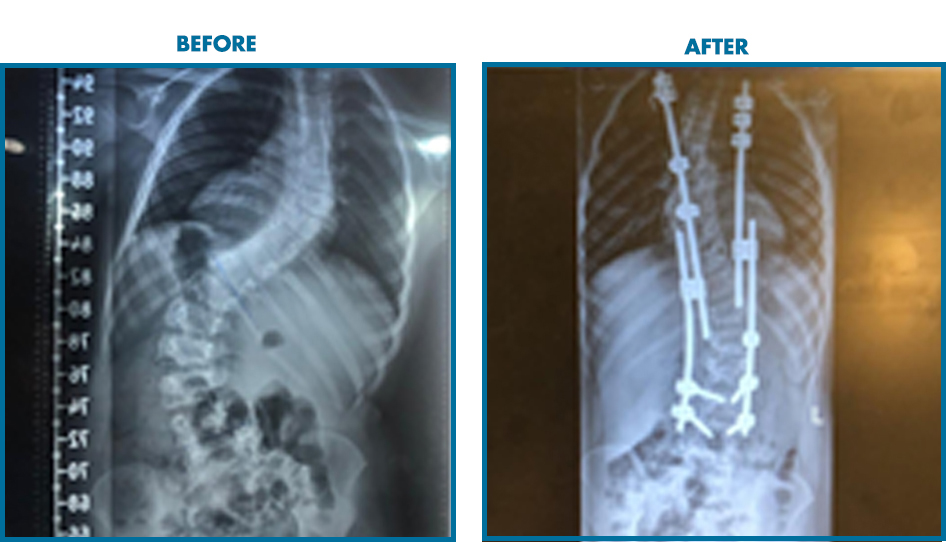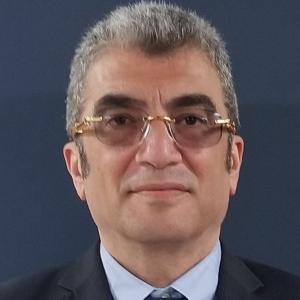Surgical services
Our team of highly subspecialized surgeons can perform the whole spectrum of spine treatments. These include the following:
- Spinal deformity / Spinal surgery: including minimally intervention surgery and spinal adjustment without fixing (Tethering)
- Scoliosis of children under 10 years of age, Early Onset Scoliosis with techniques avoiding recurrent surgeries for lengthening
- Adolescent Idiopathic Scoliosis using less invasive techniques
- Scoliosis of the spine in adults and the elderly
- Limited intervention surgeries for endoscopic herniated disc treatment
- (Endoscopic Discectomy) and by Micro Discectomy and Neurotransmitter
- Fixation of the spine when there is lack of balance in the vertebrae with limited overlap (MIS TLIF) (OLIF)
- Treating fragile spinal fractures with cement injections for the elderly
- Stabilization of fractured backbones
- Herniated Slip Disc surgery ACDF, front and back
- Bacterial infections of the spine
- Removing spinal tumors
Pediatric scoliosis
Pediatric spine deformity (scoliosis) is a lateral bending of the spine. The most important type is posterior scoliosis, caused by the presence of deformity or adhesions between the vertebrae of the spine from birth. Its symptoms often appear in the first years of the child's life.
Children below 10 years of age have a growing spine. These patients need appropriate evaluation by a specialist team: Some just need monitoring, while others may need surgery. At Abdali Hospital we try to perform non-surgical management as the preferred option, with treatments such as bracing and casting.
When surgery is needed, the patients need to be treated as early as possible to prevent curve progression and prevent what we call compensatory curves. The aim of surgical management for this age group is keeping the spine and chest growth and preserving spine mobility. The spine surgeons at Abdali Hospital perform minimally invasive surgery, with better outcomes and cost. Multiple procedures are available, including Active Apex Correction (APC), which delivers efficient results.
Adolescent Idiopathic Scoliosis
It is the most common type of scoliosis. Children are usually diagnosed around the age of 11 years in females and 13 years in males, which is the stage of puberty with a rapid change in the child’s growth.
This condition is generally painless. It is not accompanied by any deformation in the spine or other parts of the body nor cause any muscle problems. It is recommended that a family seeks the advice of a pediatric spine surgeon to check for spine deformity when the following warning signs are evident:
- One shoulder higher than the other
- One shoulder blade (scapula) more prominent than the other
- Unequal space between the arm and the body when arms are hanging at the sides
- The head is not centered over the pelvis
In Abdali Hospital, our highly specialist team has the capability to screen children to check for spine deformity at this age. Early diagnosis has a significant impact on effective condition management, increasing the possibility of non-surgical treatment, through bracing, to stop the curve progression.
Following the initial diagnosis, scoliosis is treated based on the location of the deviation, the angle of deflection, and the speed of development of the deviation.
If surgery is needed, in cases of continuous curve progression to more than 40 degrees or due to late diagnosis, we can provide minimally invasive techniques that decrease hospital stay and reduces risk. Minimally invasive surgery is done with either:
- Posterior fusion and instrumentation through 3 small incisions, through which the deviation is fixed and adjusted; or
- Anterior Tethering, by linking the spine using a thoracoscope to place screws from the front and fastening them without the need for fixation. This method is the latest advance in the development of scoliosis surgeries and preserves spinal growth and mobility.
These minimally invasive procedures are performed at Abdali Hospital under strict protocols to ensure an optimum safety level. Usually the patient will stay one night in the ICU right after surgery to ensure maximum safety, and then is transferred to the ward for 3 nights. Usually the patients are discharged on the 4th-5th day.
Degenerative scoliosis
This is the most common type of scoliosis. It is often caused by a friction and a spinal reflex in the lumbar region of the spine and accompanied by pain in the lower ends and while walking.
Treatment of degenerative scoliosis begins with pain management, acupuncture and physiotherapy. When prophylactic treatment fails, surgery may be the best option. It is preferable to rely on limited intervention surgeries to correct the deviation and free the nerves and spinal cord.
Cases
Case 1: 8 year old with severe spine deformity
This 8 year old boy had a history of severe spinal deformity, with multiple curves, that would increase over time. The child is already decompensated.
The surgery was performed using a safe technique that we do for children below 10 years of age, at Abdali Hospital, with clear improvement.
The child will need just one additional small surgery after 9 months to get the spine growing smoothly, with rod sliding.

Case 2: 9 years old girl with severe multilevel deformities in her back
This is a case of a 9 years old girl with severe multilevel deformities in her back.
She needed a safe surgery that would not restrict spine growth, and avoid getting the child every 6 months through new surgeries.
She underwent surgery at Abdali Hospital: a safe, effective treatment without the need of recurrent admissions.

Case 3: 1.5 years old child with multiple deformities including severe spine deformity that affected the neurological status of both lower limbs
This is a case of a 1.5 years old child with multiple deformities including severe spine deformity that affected the neurological status of both lower limbs.
Surgery could not be postponed due to the weakness of his lower limbs. Surgery was done to prevent the curve progression and release the tension on the spinal cord. The surgery went well without complications.
The child lower limbs movement improved. He will need minor surgery in the future to maintain spine growth.
In Abdali Hospital we are highly experienced in performing the most complicated cases of growing spine for very young children.

Case 4: 15 years old girl correcting severe spine deformity
This case is an example of our surgeons work for a 15 years old girl correcting severe spine deformity with minimal invasive surgery.
In Abdali Hospital we have surgeons with high experience in managing spine deformities in Adolescents that need correction and fusion with minimal invasive techniques. Through these techniques the patient will have 3 small incisions instead of a long big one.
This will maintain the correction with lower blood loss during surgery, less incidence of infection, and better cosmetic results.

Case 5: Early onset scoliosis
This is an example of Abdali Hospital spine surgeons experience in introducing minimal invasive surgery in early onset scoliosis.
Our surgeons, highly experienced in early onset scoliosis management, did the surgery with spine correction for the growing spine through percutaneous screws that will decrease the fusion incidence in these cases.





